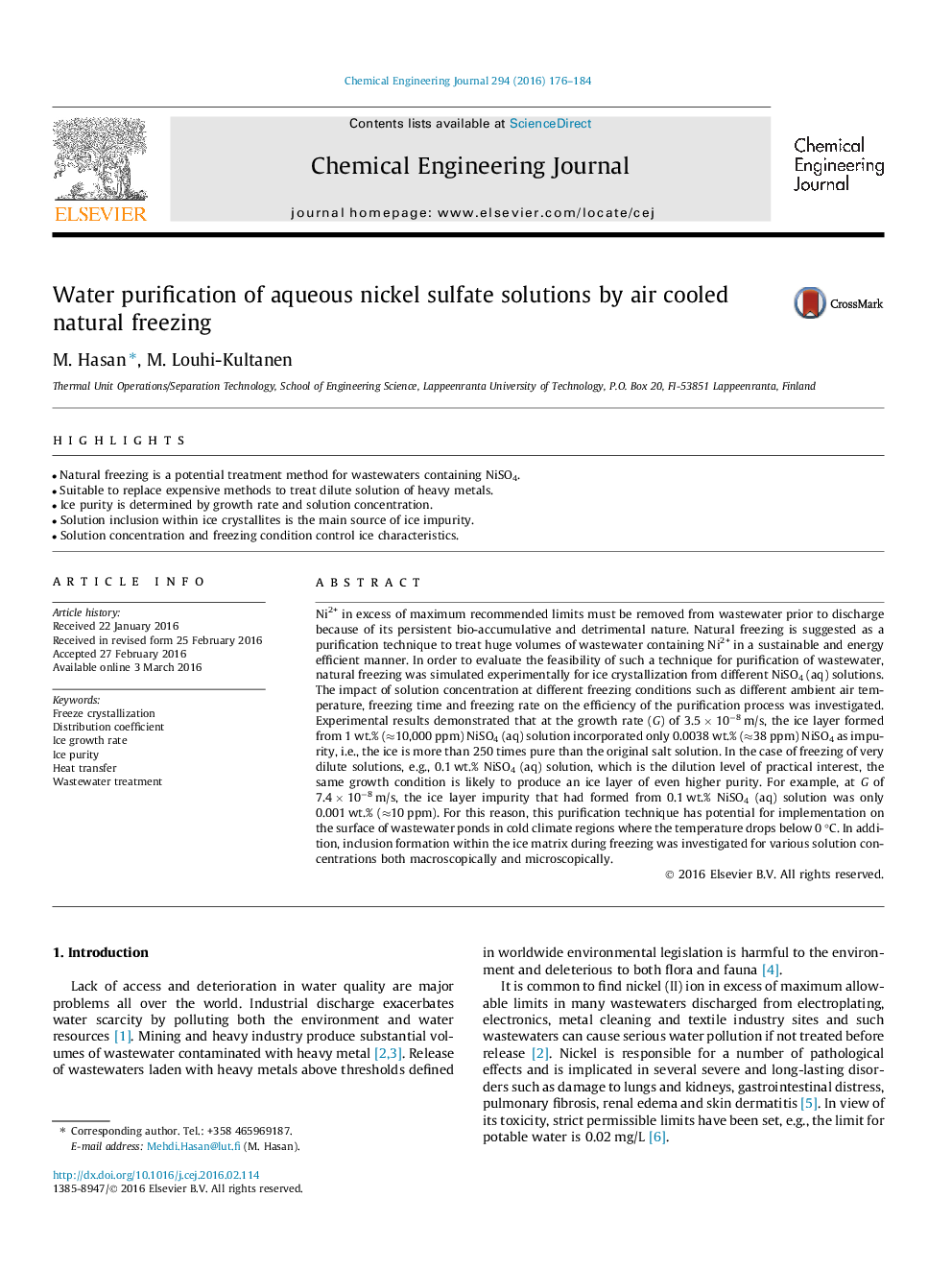| کد مقاله | کد نشریه | سال انتشار | مقاله انگلیسی | نسخه تمام متن |
|---|---|---|---|---|
| 145707 | 456349 | 2016 | 9 صفحه PDF | دانلود رایگان |
• Natural freezing is a potential treatment method for wastewaters containing NiSO4.
• Suitable to replace expensive methods to treat dilute solution of heavy metals.
• Ice purity is determined by growth rate and solution concentration.
• Solution inclusion within ice crystallites is the main source of ice impurity.
• Solution concentration and freezing condition control ice characteristics.
Ni2+ in excess of maximum recommended limits must be removed from wastewater prior to discharge because of its persistent bio-accumulative and detrimental nature. Natural freezing is suggested as a purification technique to treat huge volumes of wastewater containing Ni2+ in a sustainable and energy efficient manner. In order to evaluate the feasibility of such a technique for purification of wastewater, natural freezing was simulated experimentally for ice crystallization from different NiSO4 (aq) solutions. The impact of solution concentration at different freezing conditions such as different ambient air temperature, freezing time and freezing rate on the efficiency of the purification process was investigated. Experimental results demonstrated that at the growth rate (G) of 3.5 × 10−8 m/s, the ice layer formed from 1 wt.% (≈10,000 ppm) NiSO4 (aq) solution incorporated only 0.0038 wt.% (≈38 ppm) NiSO4 as impurity, i.e., the ice is more than 250 times pure than the original salt solution. In the case of freezing of very dilute solutions, e.g., 0.1 wt.% NiSO4 (aq) solution, which is the dilution level of practical interest, the same growth condition is likely to produce an ice layer of even higher purity. For example, at G of 7.4 × 10−8 m/s, the ice layer impurity that had formed from 0.1 wt.% NiSO4 (aq) solution was only 0.001 wt.% (≈10 ppm). For this reason, this purification technique has potential for implementation on the surface of wastewater ponds in cold climate regions where the temperature drops below 0 °C. In addition, inclusion formation within the ice matrix during freezing was investigated for various solution concentrations both macroscopically and microscopically.
Journal: Chemical Engineering Journal - Volume 294, 15 June 2016, Pages 176–184
